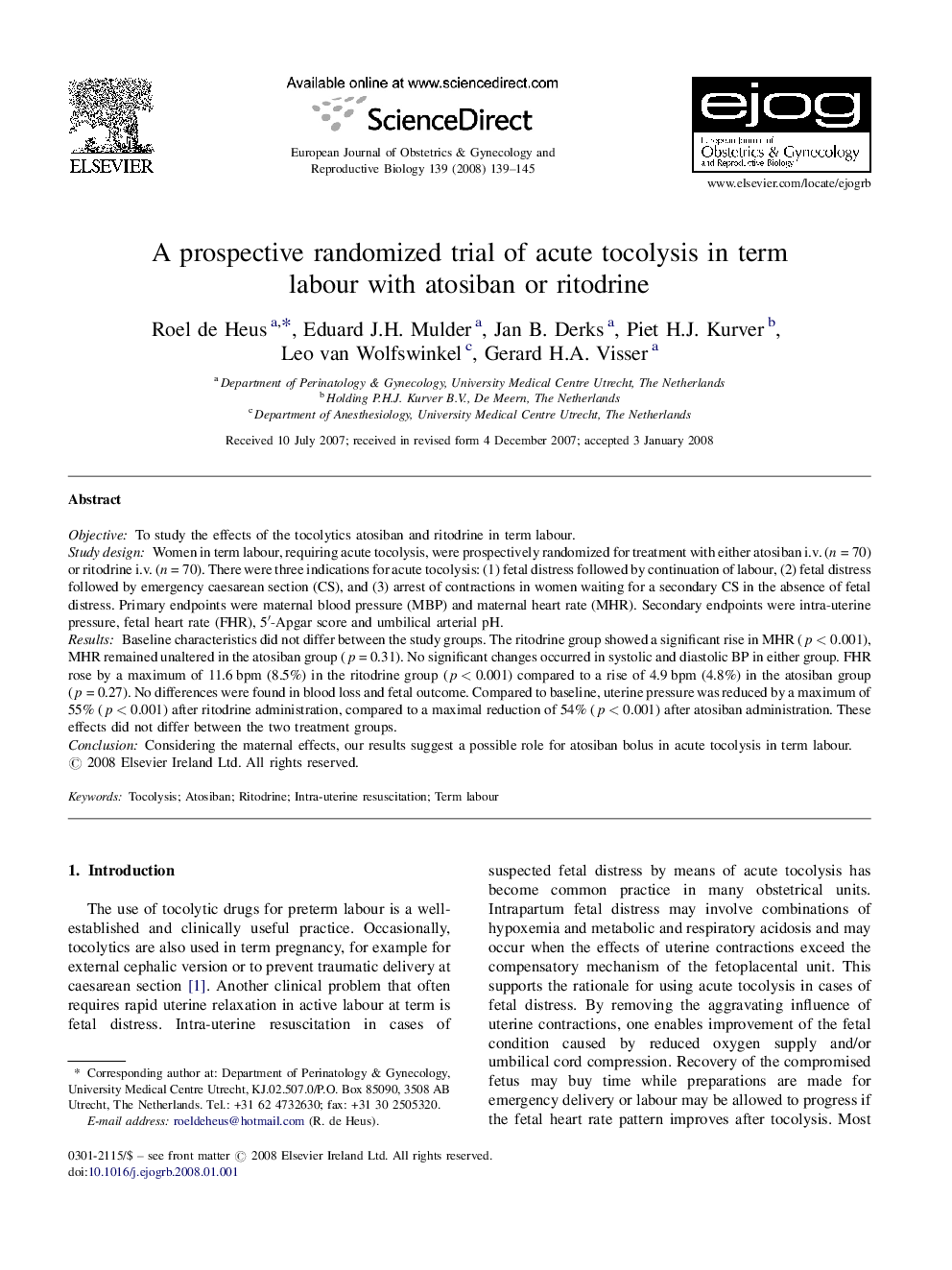| Article ID | Journal | Published Year | Pages | File Type |
|---|---|---|---|---|
| 3922197 | European Journal of Obstetrics & Gynecology and Reproductive Biology | 2008 | 7 Pages |
ObjectiveTo study the effects of the tocolytics atosiban and ritodrine in term labour.Study designWomen in term labour, requiring acute tocolysis, were prospectively randomized for treatment with either atosiban i.v. (n = 70) or ritodrine i.v. (n = 70). There were three indications for acute tocolysis: (1) fetal distress followed by continuation of labour, (2) fetal distress followed by emergency caesarean section (CS), and (3) arrest of contractions in women waiting for a secondary CS in the absence of fetal distress. Primary endpoints were maternal blood pressure (MBP) and maternal heart rate (MHR). Secondary endpoints were intra-uterine pressure, fetal heart rate (FHR), 5′-Apgar score and umbilical arterial pH.ResultsBaseline characteristics did not differ between the study groups. The ritodrine group showed a significant rise in MHR (p < 0.001), MHR remained unaltered in the atosiban group (p = 0.31). No significant changes occurred in systolic and diastolic BP in either group. FHR rose by a maximum of 11.6 bpm (8.5%) in the ritodrine group (p < 0.001) compared to a rise of 4.9 bpm (4.8%) in the atosiban group (p = 0.27). No differences were found in blood loss and fetal outcome. Compared to baseline, uterine pressure was reduced by a maximum of 55% (p < 0.001) after ritodrine administration, compared to a maximal reduction of 54% (p < 0.001) after atosiban administration. These effects did not differ between the two treatment groups.ConclusionConsidering the maternal effects, our results suggest a possible role for atosiban bolus in acute tocolysis in term labour.
